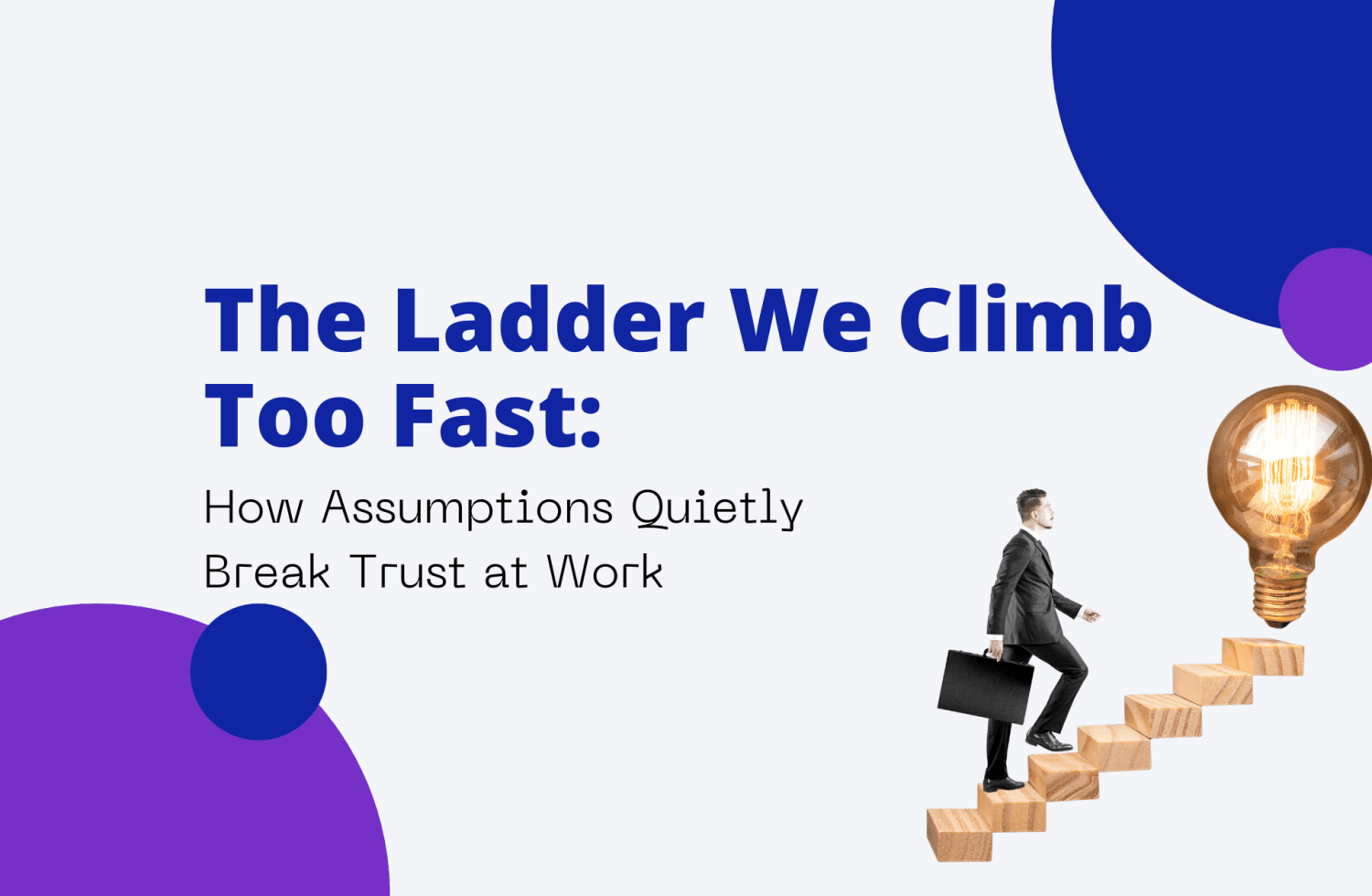Click Here to Download the PDF.
Let’s be honest: most hard conversations fall apart before they even begin.
Not because someone’s wrong.
Not because the other person is impossible.
And not because you don’t care.
They fall apart because of what happens before the first word ever leaves your mouth.
You’re already stressed.
They’re already tense.
The issue is real, but the moment is overloaded.
And what could have been a meaningful, forward-moving conversation gets buried under miscommunication, assumptions, or defensiveness.
We talk louder instead of slower.
We try to prove instead of pause.
We brace for conflict instead of preparing for clarity.
But it doesn’t have to be that way.
You don’t need a perfect script.
You need a better way of showing up.
This is where the real work begins—and it starts with you.
The Real Fight Isn’t Between People—It’s Between Emotions
Here’s the truth that most people overlook: the hardest part of any tough conversation isn’t managing the other person.
It’s managing your own emotional state.
You can have the facts.
You can have the moral high ground.
You can even have the support of your team.
But if you walk into that conversation full of tension, unspoken resentment, or urgency to be right, it will show up before your words do.
Our brains are wired for defense in high-stakes conversations.
We scan for tone, for posture, for threat.
We listen just long enough to react.
But clarity doesn’t live in reaction. It lives in regulation.
That’s why your emotional state is the most underrated skill in leadership, communication, and conflict resolution.
So before the next difficult moment, try this:
- Sit still for two minutes with your feet grounded.
- Breathe in slowly for four seconds. Exhale for six.
- In your head, repeat your goal. Something simple like: “I want to understand.” Or “I want to speak honestly.”
This isn’t about being zen.
It’s about taking back the wheel.
Because if you don’t choose calm, chaos will choose for you.
Want to Be Understood? Start Speaking in a Way That Can Be Heard
Most people don’t communicate poorly because they’re careless.
They communicate poorly because they’re emotional.
And emotion makes everything faster, louder, messier.
The good news? You can rewire this.
You don’t have to lose your edge to stay grounded. In fact, clarity makes you sharper.
Here are three changes that immediately shift the energy of a conversation:
1. Say what you see—not what you assume.
Assumptions trigger defense. Observations invite conversation.
Instead of: “You don’t respect my time.”
Try: “You’ve been twenty minutes late three times this week.”
When you stay in the realm of facts, you create space for dialogue instead of denial.
2. Use “I” statements—and pause.
This sounds simple, but it’s not. Most people say “I” and then immediately blame.
“I feel like you’re just trying to win.”
That’s not an “I” statement—it’s a weaponized opinion.
A real “I” statement sounds like:
“I felt frustrated when the feedback wasn’t shared with me directly.”
Then pause. Don’t fill the silence. Let it land.
3. Repeat what they said—before you add anything new.
You don’t need to agree.
But if you want to be heard, you need to prove you were listening.
“So it sounds like you felt shut out in that decision. Is that what you meant?”
That small act of reflection builds trust faster than any argument ever could.
The CALM Method: A Simpler Way to Prepare for Tough Talks
Let’s not overcomplicate it.
Most people don’t need another 12-step communication strategy.
They need something they can actually remember in the heat of the moment.
So here’s what I teach teams, executives, and managers when emotions are high and clarity is low:
The CALM Model
C – Clarity
What is the one thing you’re trying to achieve in this conversation? Not five things. Not a vague hope that they’ll “understand.” Get painfully specific.
Example: “I want us to agree on how we’ll handle feedback moving forward.”
A – Anchor
Before the talk, ground yourself. This could mean a walk, some deep breathing, or even just practicing your first sentence out loud. Emotion needs a channel before it becomes language.
L – Listen
Not passively. Not while waiting for your turn. Listen fully, then repeat back what you heard. This builds psychological safety and slows the cycle of misinterpretation.
M – Move Forward
End the conversation with one next step. Not a wishlist. Just one commitment. It could be scheduling a follow-up or agreeing to try something new for a week.
Why it works: You walk away knowing something got done, not just said.
A Real Workplace Story That Changed Everything
I was working with a tech company where the leadership team was at a standstill.
They were trying to align on project roles for a product launch, but every meeting turned into a power struggle.
One person constantly cut others off.
Another grew silent and resentful.
Meetings ended in vague agreements, followed by quiet backlash.
They brought me in thinking I’d help them fix the structure.
But structure wasn’t the problem. The emotional current underneath their conversations was.
There was so much frustration sitting just under the surface.
Some team members were venting to HR.
Others were avoiding collaboration entirely.
The leader felt stuck and unsure how to reset the culture.
The tension wasn’t about the launch.
It was about unspoken emotion: feeling unheard, feeling disrespected, feeling overwhelmed.
But no one was naming it.
I had each person prep using the Say It Right principles:
- Identify one clear goal they had for the meeting.
- Write down a single fact that represented the current friction.
- Practice their first sentence out loud—without opinions, just observations.
Then I gave the group one new rule:
You can’t respond to someone until you repeat back what they just said.
At first, it felt clunky.
Then, slowly, the room softened.
People stopped interrupting.
Voices got calmer.
A few even started asking genuine questions.
In 45 minutes, they made more progress than they had in three weeks.
They ended with one concrete decision: how they’d give feedback moving forward, and who would own follow-ups.
The next day, one of the quieter team members emailed me:
“That was the first time I felt like everyone was actually on the same side.”
Sometimes all it takes is one shift in how you speak—and everything starts to change.
Best Tools to Actually Get Better at This
There’s no shortage of communication advice out there.
But when it comes to building emotional discipline and learning how to speak with calm clarity, these are the tools and resources I recommend again and again:
BOOK
Difficult Conversations: How to Discuss What Matters Most by Douglas Stone, Bruce Patton, and Sheila Heen.
This book is essential reading for anyone who wants to understand the why behind emotional blowups—and how to navigate them with truth and skill.
TED TALK
The Gift of Conflict by Amy E. Gallo
Amy delivers one of the most useful TED Talks on how disagreement isn’t something to avoid—it’s something you can use to build stronger relationships, if you’re willing to stay steady through it.
TOOL
Voice Memo + Reflection Practice
Before your next high-stakes conversation, record yourself saying your opening sentence. Play it back. Then adjust. After the talk, write down what helped and what didn’t. This sounds simple, but it’s how people go from reactive to responsive.
JOURNALING SYSTEM
Create a 3-question debrief:
- Did I say what I meant?
- Did I speak from pressure or clarity?
- Did I leave the conversation better than I found it?
The best communicators I know aren’t perfect. They’re just reflective.
What Strength Really Looks Like in a Hard Moment
Being Clear Is Being Kind. Being Calm Is Being Strong.
It’s easy to speak from confidence when everything feels good.
But the real test of who you are is how you speak when everything feels hard.
When your voice shakes.
When your hands are cold. When your chest is tight.
That’s the moment most people back down—or blow up.
But there’s another way.
You can learn to hold your clarity, even when your voice shakes.
You can tell the truth with respect, even when you're angry.
You can slow down the spiral, even when your mind is racing.
And when you do? You change the emotional tone of the room.
You become the person who doesn't just react—you lead.
You don’t need to overpower to be powerful. You just need to be steady.
Because in the end, people won’t remember your perfect logic.
They’ll remember how they felt in your presence.
They’ll remember the moment you didn’t flinch.
The space you gave for truth. The calm you chose to carry.
And that will stay with them far longer than any speech ever could.
Download the Infographic
If this article spoke to something you’ve felt—if you’ve ever walked away from a conversation wishing you could have shown up better—download the Say It Right infographic.
You’ll get a printable PDF version you can keep nearby.
It’s designed to help you stay clear, steady, and ready in the moments that matter most.
Keep it with you. Use it when you need to speak up.
And remember—calm is a choice you make before the moment begins.
-
Justin




